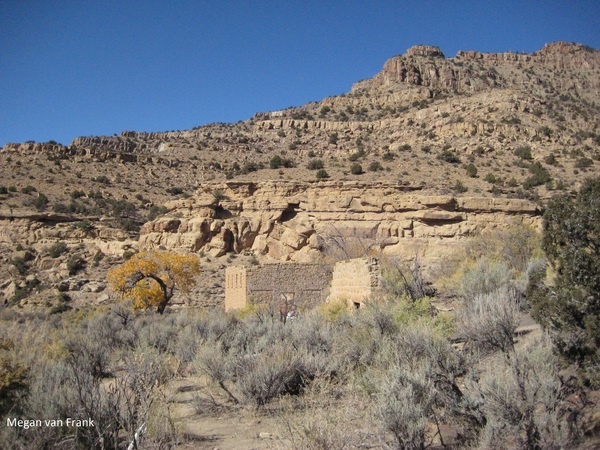Dublin Core
Title
Description
The canyon where the ghost town of Sego sits has been visited by people for millennia. A panel of pictographs in the canyon dates back thousands of years, but its mining history began in 1908, when local rancher Henry Ballard discovered a seam of coal near his ranch in northern Grand County. For a time the area flourished, but the changes in Utah’s local mining economy ultimately caused its collapse.
Ballard bought the land and hired local folks to mine the coal. They set up a small coal camp, calling it Ballard. In 1911, he sold the mine to a Salt Lake-based businessman, who formed a corporation called the American Fuel Company. They set up coal processing equipment, and extended a railroad line to connect the mines to the Denver & Rio Grande Railroad line to the south. The company developed the coal camp into a proper town -- giving it the new name, Nelsen, after the mine’s new general manager, Richard Nelsen.
By 1915 profits were low, and paydays were irregular. The miners went on strike after not having been paid in months. In 1916, Neslen was replaced, and the company renamed itself to Chesterfield Coal Company. The town's name was changed once again in 1918, this time to Sego for the sego lily, Utah’s state flower, which flourished in the canyon. Despite these bumpy beginnings, the coal town lived on for decades.
Sego was home to a diverse community. Miners of Italian, African American, Japanese, and Greek descent all made homes in the town. Betty Coccio Dalton grew up in Sego, and remembers childhood in the 1930s and 40s. “My grandparents… migrated to America [from Italy] for a better life,” she said. “My grandfather worked in the mines but also had an orchard, vineyard, hay fields and large garden.” Some families carried on traditions from their homelands, including Italian families making wine from grapes grown in the rocky canyons.
By 1947, the mine was unprofitable, and the company closed. Some of the miners bought out the assets, but a fire in 1949 destroyed crucial equipment and flash flooding in the 1950s wiped out several buildings. Today, the skeletons of buildings remain – and Sego lives on in memories.
Creator
Source
_______________
See Daughters of the Utah Pioneers,Grand Memories, Utah Printing Company, 1972; Richard Firmage, A History of Grand County, Utah State Historical Society, 1996; Betty Coccio Dalton, “Memories of Sego,” Canyon Legacy (no. 50), Spring 2004; Clayton R. Brough, “Sego,” Canyon Legacy (no. 50), Spring 2004.

